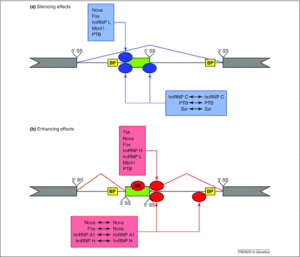Back to: MICROBIOLOGY 500 LEVEL
Welcome to class!
My sharp and focused microbiologist, welcome back! I’m so glad to see your consistent energy—it shows you’re ready to master the world of microbes and molecular biology with confidence. Today, we’re going to talk about something really interesting: how bacteria manage their genes like smart, efficient Nigerians running small businesses. Let’s understand how operons, especially the lac and trp operons, help bacteria save time and energy by working only when necessary.
Operon Models (Lac, Trp)
Have you ever noticed how we switch off lights or turn off the tap when not in use? That’s because we don’t like wasting resources—same thing with bacteria. They don’t just produce enzymes and proteins for fun; they do it only when they need to. And the clever system they use is called an operon.

An operon is a group of genes that are controlled together and transcribed into a single mRNA strand. It allows bacteria to turn genes on or off based on what’s happening in their environment.
Let’s look at the two most famous examples: lac operon and trp operon.
1. Lac Operon – An Inducible Operon (Switched ON When Needed)
The lac operon helps bacteria digest lactose, a sugar found in milk. But here’s the smart part: the operon is usually off. Why? Because the bacteria would rather use glucose, which is easier to break down.
How it works:
When no lactose is present, a repressor protein sits on the operon and blocks transcription—no enzymes are made.
When lactose is available, it binds to the repressor and removes it. This allows RNA polymerase to transcribe the genes needed to break down lactose.
Think of it like this: a Mama Put shop only starts cooking amala when customers start coming. No point wasting firewood if nobody’s hungry, abi?
2. Trp Operon – A Repressible Operon (Switched OFF When Not Needed)
The trp operon helps bacteria make tryptophan, an amino acid. But if there’s already enough tryptophan in the environment, the bacteria don’t need to make more. So this operon works in the opposite way.
How it works:
When tryptophan is low, the operon stays on, and the genes are transcribed to make enzymes that produce tryptophan.
When tryptophan is high, it acts like a corepressor, binding to the repressor protein and activating it. The repressor then blocks the operon to stop further production.

It’s just like your generator switching off when NEPA brings light. Why keep burning fuel if you already have power?
Summary
- Operons are gene clusters in bacteria that are regulated together.
- Lac operon is inducible: turned ON only when lactose is present.
- Trp operon is repressible: turned OFF when tryptophan is abundant.
- These systems help bacteria conserve energy and respond quickly to their environment.
Evaluation
- What is an operon?
- How does the lac operon work when lactose is present?
- What happens to the trp operon when tryptophan levels are high?
You’ve done wonderfully well today! Just like a wise Nigerian who plans carefully to avoid waste, bacteria also regulate their genes with great wisdom. Understanding operons shows just how smart nature can be. Keep learning with joy and confidence—Afrilearn is right here with you, helping you rise to greatness. Can’t wait to see you in the next class!
